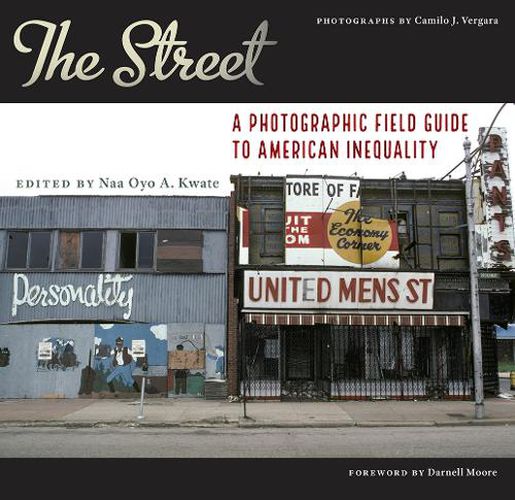Readings Newsletter
Become a Readings Member to make your shopping experience even easier.
Sign in or sign up for free!
You’re not far away from qualifying for FREE standard shipping within Australia
You’ve qualified for FREE standard shipping within Australia
The cart is loading…






What do vacant lots signify? How should we interpret architectural relics overgrown with weeds? What social processes do street art memorials embody? The Street drills down into the intimate street photography of Camilo J. Vergara to outline a visual dictionary for urban inequality. City streets reveal much about the inequality that carves up American life and opportunity, and urban corridors harbor evidence that society has sorted people, communities, and resources unequally.
In this collection, a leading cast of scholars from a variety of disciplines creatively interpret Vergara’s photos of Camden, New Jersey. Field guides give readers the tools to identify phenomena quickly and accurately; this guide visualizes the elements, policies, and social exchanges that characterize and contest inequality in the United States. Drawing on Camden as a case study, each essay decodes the visuals that require scrutiny to understand the unequal landscapes of American cities and makes clear that the stereotyped analyses of urban residents and neighborhoods are insufficient. Where Camden has been popularly construed as a failed urbanity-and that failure is attached to the residents who live there-the writers in this volume illuminate the public and private policies that are responsible, offering a corrective to predictable analyses of poor cities.
Tackling topics such as race and law enforcement, gentrification, food environments, childcare and schooling, urban aesthetics, credit markets, and health care, the contributors look for markers of inequality and challenge conventional thinking about what we should see when we observe troubled landscapes. A timely book that will be of interest to fans, citizens, students, and scholars of urban life, The Street is an innovative guidebook to the most urgent challenges facing American cities today.
$9.00 standard shipping within Australia
FREE standard shipping within Australia for orders over $100.00
Express & International shipping calculated at checkout
What do vacant lots signify? How should we interpret architectural relics overgrown with weeds? What social processes do street art memorials embody? The Street drills down into the intimate street photography of Camilo J. Vergara to outline a visual dictionary for urban inequality. City streets reveal much about the inequality that carves up American life and opportunity, and urban corridors harbor evidence that society has sorted people, communities, and resources unequally.
In this collection, a leading cast of scholars from a variety of disciplines creatively interpret Vergara’s photos of Camden, New Jersey. Field guides give readers the tools to identify phenomena quickly and accurately; this guide visualizes the elements, policies, and social exchanges that characterize and contest inequality in the United States. Drawing on Camden as a case study, each essay decodes the visuals that require scrutiny to understand the unequal landscapes of American cities and makes clear that the stereotyped analyses of urban residents and neighborhoods are insufficient. Where Camden has been popularly construed as a failed urbanity-and that failure is attached to the residents who live there-the writers in this volume illuminate the public and private policies that are responsible, offering a corrective to predictable analyses of poor cities.
Tackling topics such as race and law enforcement, gentrification, food environments, childcare and schooling, urban aesthetics, credit markets, and health care, the contributors look for markers of inequality and challenge conventional thinking about what we should see when we observe troubled landscapes. A timely book that will be of interest to fans, citizens, students, and scholars of urban life, The Street is an innovative guidebook to the most urgent challenges facing American cities today.